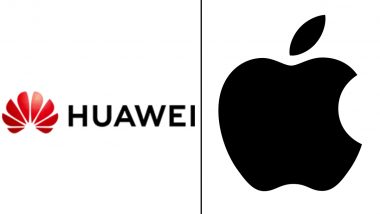New York [USA], June 23 (ANI): Breakthrough Listen - the initiative to find signs of intelligent life in the universe, on Tuesday released an innovative catalogue of 'Exotica' -- a diverse list of objects of potential interest to astronomers searching for technosignatures.
These objects of potential interest are indicators of technology developed by extraterrestrial intelligence.
The catalogue is a collection of over 700 distinct targets intended to include 'one of everything' in the observed universe -- ranging from comets to galaxies, from mundane objects to the rarest and violent celestial phenomena.
The search for extraterrestrial intelligence (SETI) has been pursued as a serious scientific program, though at times sporadically, for sixty years. In the last five years, Listen has massively increased the scope of radio (as well as optical) searches and has developed technology, deployed at giant radio telescopes on three continents, that enables coverage of an unprecedented range of frequencies at high resolution.
As yet, however, no confirmed technosignature has been detected. One explanation is, of course, that we are alone in the universe. On the other hand, in a vast cosmos it is certainly possible that astronomers have yet to look in the most promising places.
The new Exotica catalogue is the centerpiece of Listen's efforts to expand the diversity of targets. The crucial principle behind it is the concept of 'survey breadth': the diversity of objects observed during a program.
This should help astronomers constrain the range of potential habitats for extraterrestrial intelligence, as well as rule out the possibility that any phenomena widely considered natural are in fact artificial. Conversely, it may identify natural events, or confounding data such as interference, that mimic the kinds of artificial signal SETI researchers are on the lookout for.
The Exotica catalogue contains four categories of object:
1) Prototypes: a list containing at least one example of every known kind of celestial object (apart from those too transient to present realistic observation targets). Planets and moons, stars at every point of their life cycle, galaxies big and small, serene star clusters and blazing quasars, and more are all included in the list.
2) Superlatives: objects with the most extreme properties. These include examples like the hottest planet, stars with unusually high or low metal content, the most distant quasar and fastest-spinning pulsar, and the densest galaxy.
3) Anomalies: enigmatic targets whose behaviour is currently not satisfactorily explained. For instance, the famous "Tabby's Star" with its bizarre dimming behaviour; 'Oumuamua -- the interstellar object that passed near Earth in 2017; unexplained optical pulses that last mere nanoseconds; and stars with excess infrared radiation that could conceivably be explained as waste heat from alien megastructures.
4) A Control sample of sources not expected to produce positive results.
Accompanying the catalogue is extensive discussion of the classification of objects and a new classification system for anomalies, as well as plans for upcoming and potential observations based on this work.
"Breakthrough Listen has already greatly expanded the breadth and depth of its search. The publication of this catalog is a new and significant step for the program," said Yuri Milner, the founder of the Breakthrough Initiatives.
"When it comes to the search for intelligent life, it's vital to have an open mind," noted S. Pete Worden, Executive Director of the Breakthrough Initiatives.
"Until we understand more about the forms another civilization and its technology could take, we should investigate all plausible targets. Cataloguing them is the first step toward that goal," added Worden.
Dr. Andrew Siemion, leader of the Breakthrough Listen science team at the University of California, Berkeley's SETI Research Center (BSRC), said, "Technosignature searches to date have largely focused on the search for 'life as we know it': nearby stars -- in particular those known to host planets with the potential for liquid water on their surfaces. The expanded search capabilities that Breakthrough Listen has made possible allow us to consider a much wider range of possible technology-laden environments."
"Many discoveries in astronomy were not planned," remarked the lead author of the new paper, Dr. Brian Lacki. "Sometimes a major new discovery was missed when nobody was looking in the right place, because they believed nothing could be found there. This happened with exoplanets, which might have been detected before the 1990s if astronomers looked for solar systems very different than ours. Are we looking in the wrong places for technosignatures? The Exotica catalogue will help us answer that question."
"The catalogue is not just limited to SETI, though. My hope is that any program with a new capability may use the Exotica catalog as a shakedown cruise around the universe," said Lacki.
The new object list is the first in recent times that aims to span the entire breadth of astrophysics, from distant galaxies, to objects in our own Solar System. The Listen team has developed it conceptually, compiled it, and shared it with the astronomical community in the hope that it can guide future surveys -- whether studying life beyond Earth or natural astrophysics -- and serve as a general reference work for the field.
Breakthrough Listen is a scientific program in search for evidence of technological life in the universe. It aims to survey one million nearby stars, the entire galactic plane and 100 nearby galaxies at a wide range of radio and optical bands.(ANI)
(This is an unedited and auto-generated story from Syndicated News feed, LatestLY Staff may not have modified or edited the content body)













 Quickly
Quickly




















